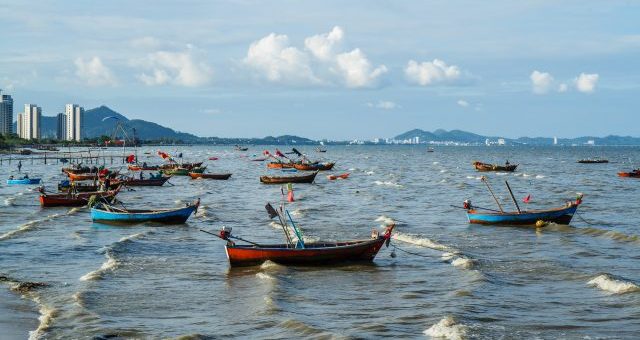A new report from the United Nations Food and Agriculture Organization (FAO) shows that while growth in aquaculture has helped drive global per capita fish consumption above 20 kilograms a year for the first time, almost a third of commercial fish stocks are now overharvested at biologically unsustainable levels.
Global total capture fishery production in 2014 was 93.4 million tonnes, including output from inland waters, up slightly over the previous two years. Alaska pollock was the top species, replacing anchoveta for the first time since 1998 and offering evidence that effective resource management practices have worked well. Record catches for four highly valuable groups – tunas, lobsters, shrimps and cephalopods – were reported in 2014.
There were around 4.6 million fishing vessels in the world in 2014, 90 percent of which are in Asia and Africa, and only 64,000 of which were 24 meters or longer, according to SOFIA.
Globally, fish provided 6.7 percent of all protein consumed by humans, as well as offering a rich source of long-chain omega-3 fatty acids, vitamins, calcium, zinc and iron. Some 57 million people were engaged in the primary fish production sectors, a third of them in aquaculture.
Fishery products accounted for one percent of all global merchandise trade in value terms, representing more than nine percent of total agricultural exports. Worldwide exports amounted to $148 billion in 2014, up from $8 billion in 1976. Developing countries were the source of $80 billion of fishery exports, providing higher net trade revenues than meat, tobacco, rice and sugar combined.
“Life below water, which the Sustainable Development Agenda commits us to conserve, is a major ally in our effort to meet a host of challenges, from food security to climate change,” FAO Director-General José Graziano da Silva.
“This report shows that capture fisheries can be managed sustainably, while also pointing to the enormous and growing potential of aquaculture to boost human nutrition and support livelihoods with productive jobs.”
Report findings on the state of sustainability
- Some 31.4 percent of the commercial wild fish stocks regularly monitored by FAO were overfished in 2013, a level that has been stable since 2007.
- FAO’s methodology is consistent with international agreements stating that fish stocks should be maintained at or rebuilt to a size that can support Maximum Sustainable Yield (MSY). Thus, stocks are classified as being fished at biologically unsustainable levels – overfished – when they have an abundance lower than the level that can produce the Maximum Sustainable Yield.
- Decreased fish landings have been observed in some regions due to the implementation of effective management regulations, like in the Northwest Atlantic, where the annual catch is now less than half the level of the early 1970s. Halibut, flounder and haddock stocks in that area are showing signs of recovery, although that is not yet the case for cod.
- Management measures also appear to be working for the highly-priced Patagonian toothfish – a type of whitefish from Antarctica often marketed (in U.S. restaurants) as Chilean sea bass – as the catch of that fish in Antarctic waters has been stable since 2005.
- Catches of Antarctic krill, which feed directly on phytoplankton, jumped substantially to levels not reached since the early 1990s, while being maintained at sustainable levels.
- The report described the situation in the Mediterranean and Black Sea – where 59% of assessed stocks are fished at biologically unsustainable levels – as “alarming”. This is especially true for larger fish such as hake, mullet, sole and sea breams. In the Eastern Mediterranean, the possible expansion of invasive fish species associated to climate change is a concern.
- Supply-chain and other improvements have also raised the share of world fish production utilized for direct human consumption to 87 percent or 146 million tonnes in 2016, according to the report. That’s up from 85 percent or 136 million tonnes in 2014.
- The growing fish-processing sector also offers opportunities to improve the sustainability of the fish supply chain, as a host of byproducts have multiple potential and actual uses, ranging from fishmeal for aquaculture, through collagen for the cosmetics industry to small fish bones humans can eat as snacks.
You may read the report by clicking below





























































